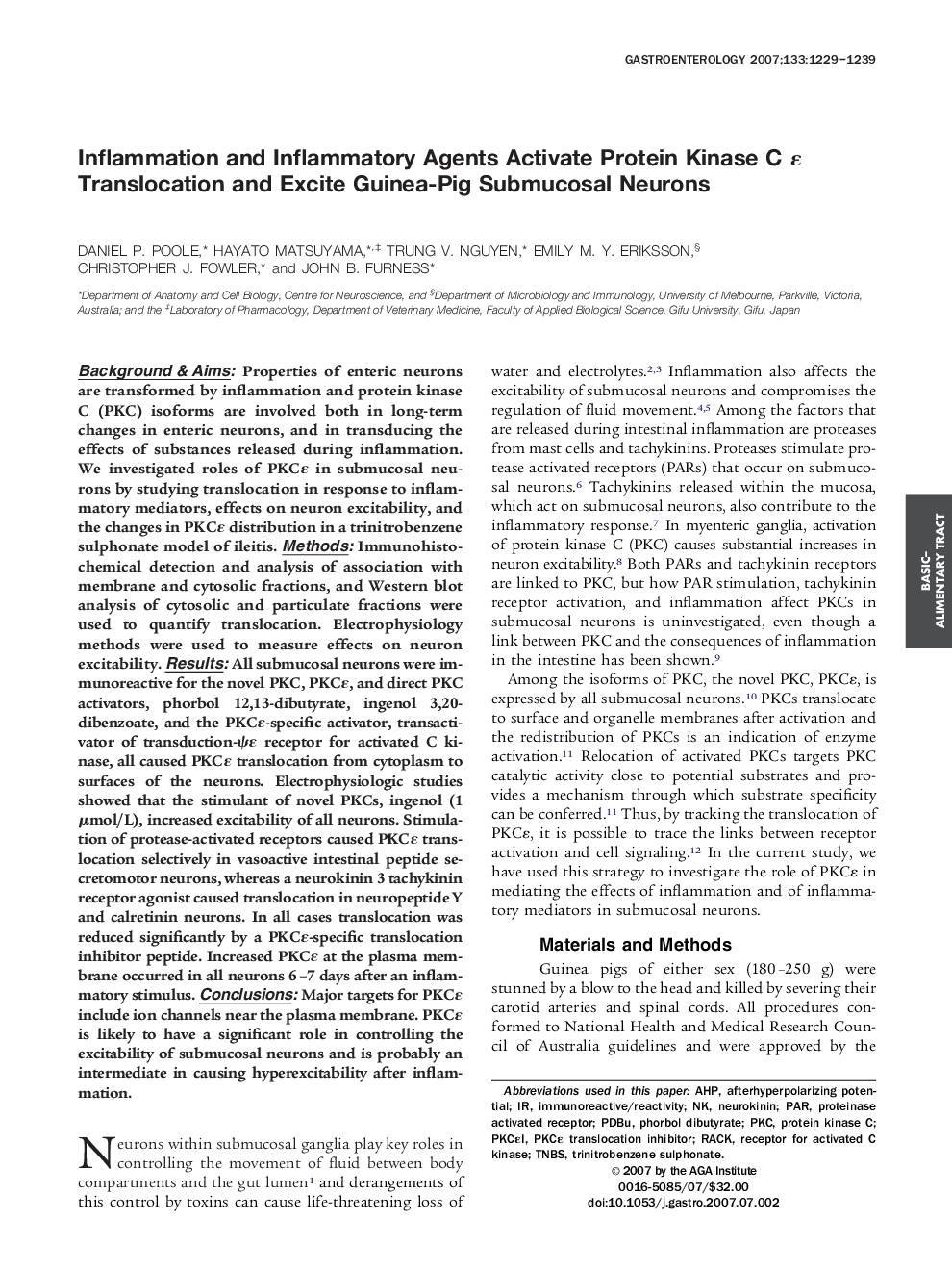| کد مقاله | کد نشریه | سال انتشار | مقاله انگلیسی | نسخه تمام متن |
|---|---|---|---|---|
| 3299062 | 1209921 | 2007 | 11 صفحه PDF | دانلود رایگان |

Background & Aims: Properties of enteric neurons are transformed by inflammation and protein kinase C (PKC) isoforms are involved both in long-term changes in enteric neurons, and in transducing the effects of substances released during inflammation. We investigated roles of PKCε in submucosal neurons by studying translocation in response to inflammatory mediators, effects on neuron excitability, and the changes in PKCε distribution in a trinitrobenzene sulphonate model of ileitis. Methods: Immunohistochemical detection and analysis of association with membrane and cytosolic fractions, and Western blot analysis of cytosolic and particulate fractions were used to quantify translocation. Electrophysiology methods were used to measure effects on neuron excitability. Results: All submucosal neurons were immunoreactive for the novel PKC, PKCε, and direct PKC activators, phorbol 12,13-dibutyrate, ingenol 3,20-dibenzoate, and the PKCε-specific activator, transactivator of transduction-ψε receptor for activated C kinase, all caused PKCε translocation from cytoplasm to surfaces of the neurons. Electrophysiologic studies showed that the stimulant of novel PKCs, ingenol (1 μmol/L), increased excitability of all neurons. Stimulation of protease-activated receptors caused PKCε translocation selectively in vasoactive intestinal peptide secretomotor neurons, whereas a neurokinin 3 tachykinin receptor agonist caused translocation in neuropeptide Y and calretinin neurons. In all cases translocation was reduced significantly by a PKCε-specific translocation inhibitor peptide. Increased PKCε at the plasma membrane occurred in all neurons 6–7 days after an inflammatory stimulus. Conclusions: Major targets for PKCε include ion channels near the plasma membrane. PKCε is likely to have a significant role in controlling the excitability of submucosal neurons and is probably an intermediate in causing hyperexcitability after inflammation.
Journal: Gastroenterology - Volume 133, Issue 4, October 2007, Pages 1229–1239